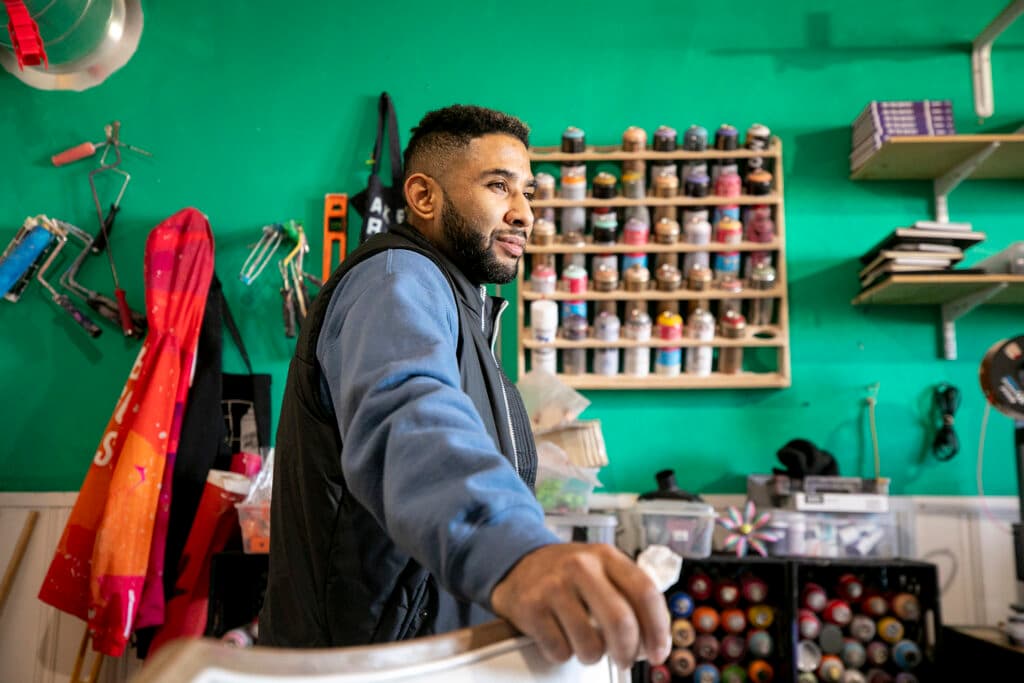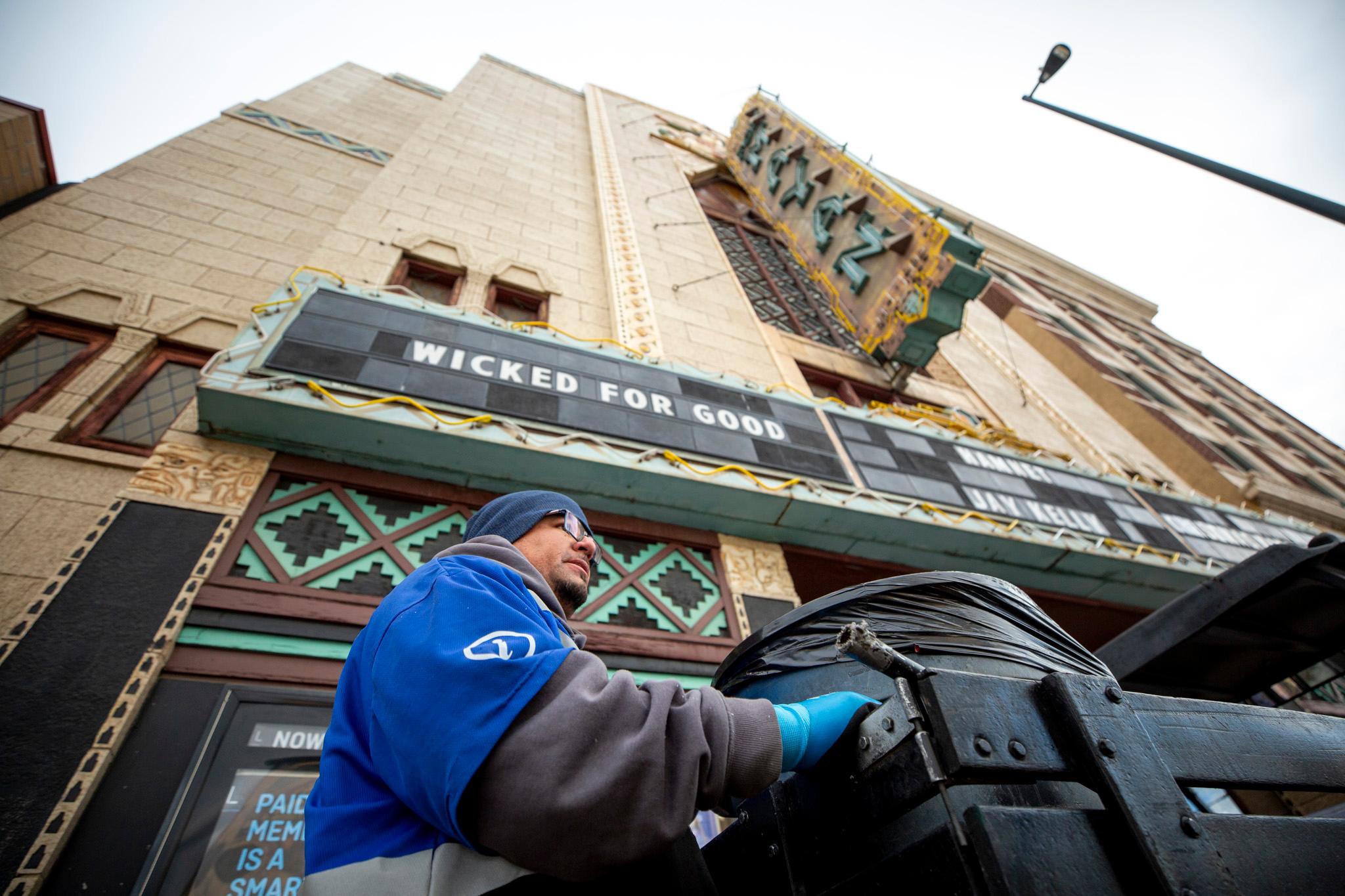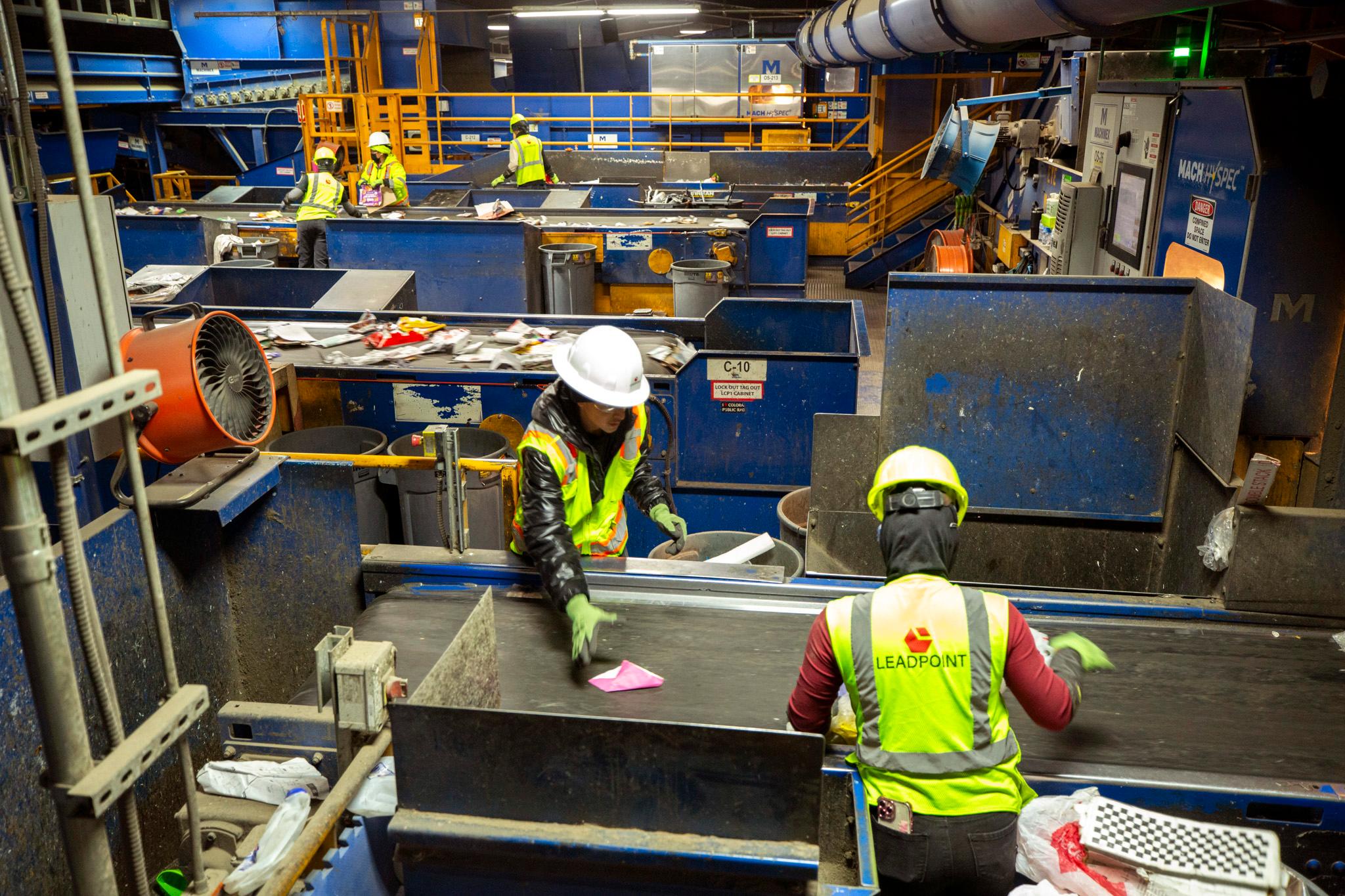As an orchestra of kicks, snares and synths blare from a computer speaker, a row of metal cans attached to a tripod rig begin spraying paint onto a rotating paper canvas. Nearby, renowned artist Thomas "Detour" Evans looks on as the device he helped build gives physical, colorful forms to the musical notes.
When the muralist is not out painting a Nikola Jokić-Jamal Murray mural near City Park, you might find him at his Five Points studio soldering wires and syncing up spray paint cans to the music produced by DJ collaborator Carl Carrell, artistically known as CRL CRRLL.
“For me, it’s just exploring,” Evans said. “While other artists may be in the studio from dusk till dawn, painting a flower and executing it really well, I’m in the studio programming a piece to do something particular.”

A video of this contraption recently made some waves on the internet, garnering the attention of some global media brands. The video is years old, but Evans said they decided to repost it.
“This project is old to us, but nobody has seen it,” Carrell said. “Right now it’s more of just researching it, having fun with it and seeing what comes from it. It’ll be ready and right when it’s ready and right.”


How this viral device works:
Orange 3D printed triggers are attached to the top of spray paint cans that are then latched in a row onto a black tripod. Each trigger has wires that drape down into a mess of more wires and flashing computer guts sprawled on a floor covered in the remnants of splattered paint.
Reaching up, Evans flips the switch initiating a rotating “infinite” poster paper canvas. The duo has spent years developing this spray-paint-music-synthesizer from inside Evans’ studio.

Carrell “paints” onto the rotating canvas using the keys of his Apple Macbook laptop from just a few feet away.
“The outer is the kick, the opposite outer is the snare,” Carrell explains. “The inners are synths and stuff like that.”
Lime green, yellow and coral blue streaks of paint drip onto the canvas, synthesizing musical notes that blare from the laptop speakers. The song is now a painting.
“People have been using software for a long time now,” Carrell said. “Audio engineering or even DJing, you can see the wave files, the colors. It’s fun to bring it alive in like an art project.”

This spray can, music synthesizer project is just the latest endeavor in a long list of music, tech and art exploration
The two have collaborated on many projects over the years that deal with the intersection of music, art and technology. Their art installations explore the relationship between tangible objects and color, investigating and exploring fresh ways to enhance the experience of their work.
When Evans isn’t up to his usual mural gigs, he’s perusing through Micro Center, a retail computer parts store, shopping for new art supplies.
“I just have an idea based on what I see in there,” Evans said. “Then I start working on how to program. I ran across this color sensor chip and was like 'Oh let me see if I can pair colors to a MIDI signal.' I’ve basically been working on that for the past week or so.”

In lieu of a paintbrush, Evans grabs a microcontroller sensor that he’s designed to identify a color’s RGB, a system of numbers representing the colors used on a digital display screen, and programming it to a specific musical note. In its early stages, the challenge is ultimately coming up with a prototype that can be used by potentially thousands of humans in a museum.
“Designing something out of nowhere because you’re solving a problem, printing it out and actually having it work, I get a lot of joy out of that,” Evans said. “Sometimes more so than painting a new canvas.”
While Evans experiments with the technical aspect of these projects, Carrell tinkers with the music and the overall presentation. It’s difficult to keep both busy artists in the same room with ample time to experiment. But sometimes the time away can give them fresh eyes to move a project along.

“That’s what keeps it interesting,” Carrell said. “We came back to this and now it’s fun again.”
Evans said he embraces the time he has to experiment on projects that he otherwise would not be able to do when he’s out in the world spray painting murals on brick walls.
“I’m building another prototype, that’s why I have that thing up there,” Evans said, pointing to a wooden apparatus hanging from the ceiling of his studio. “That will have some luggage attached to it,” referring to a sculpture he was commissioned to create out of upcycled luggage at Denver International Airport.
After an hour in the studio much of the discussion has returned to the “fun” both artists have in the experimentation process of their creations.

“Sometimes I can’t focus because I have so much shit in my head I want to try and get out,” Evans said. “I have fun learning how to do everything even though I know there’s people that are much more competent in terms of programming and not burning down the building with electrical stuff.”












